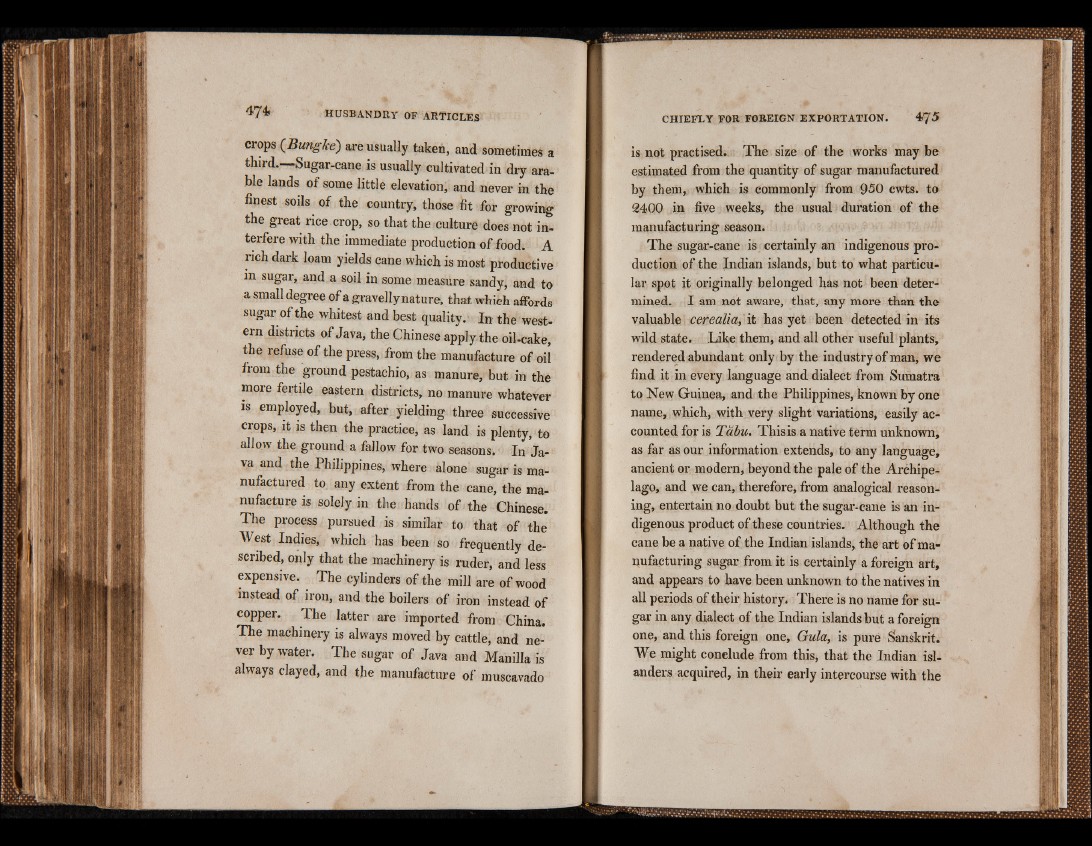
crops (Bungke) are usually taken, and sometimes a
third. Sugar-cane is usually cultivated in dry arable
lands of some little elevation, and never in the
finest soils of the country, those fit for growing
the great rice crop, so that the culture does not interfere
with the immediate production of food. A
rich dark loam yields cane which is most productive
in sugar, and a soil in some measure sandy, and to
a small degree of a gravelly nature, that which affords
sugar of the whitest and best quality. In the west-
ern districts of Java, the Chinese apply the oil-cake,
the refuse of the press, from the manufacture of oil
from the ground pestachio, as manure, but in the
more fertile eastern districts, no manure whatever
is employed, but, after yielding three successive
crops, it is then the practice, as land is plenty, to
allow the ground a fallow for two seasons. In Java
and the Philippines, where alone sugar is manufactured
to any extent from the cane, the manufacture
is solely in the hands of the Chinese.
The process pursued is similar to that of the
West Indies, which has been so frequently described,
only that the machinery is ruder, and less
expensive. The cylinders of the mill are of wood
instead of iron, and the boilers of iron instead of
copper. The latter are imported from China.
The machinery is always moved by cattle, and never
by water. The sugar of Java and Manilla is
always clayed, and the manufacture of muscavado
is not practised. The size of the works may be
estimated from the quantity of sugar manufactured
by them, which is commonly from 950 cwts. to
2400 in five weeks, the usual duration of the
manufacturing season.
The sugar-cane is certainly an indigenous production
of the Indian islands, but to what particular
spot it originally belonged has not been determined.
I am not aware, that, any more than the
valuable cerealia, it has yet been detected in its
wild state. Like them, and all other useful plants,
rendered abundant only by the industry of man, we
find it in every language and dialect from Sumatra
to New Guinea, and the Philippines, known by one
name, which, with very slight variations, easily accounted
for is Tabu. This is a native term unknown,
as far as our information extends, to any language,
ancient or modern, beyond the pale of the Archipelago,
and we can, therefore, from analogical reasoning,
entertain no doubt but the sugar-cane is an indigenous
product of these countries. Although the
cane be a native of the Indian islands, the art of manufacturing
sugar from it is certainly a foreign art,
and appears to have been unknown to the natives in
all periods of their history. There is no name for sugar
in any dialect of the Indian islands but a foreign
one, and this foreign one, Gula, is pure Sanskrit.
We might conclude from this, that the Indian islanders
acquired, in their early intercourse with the